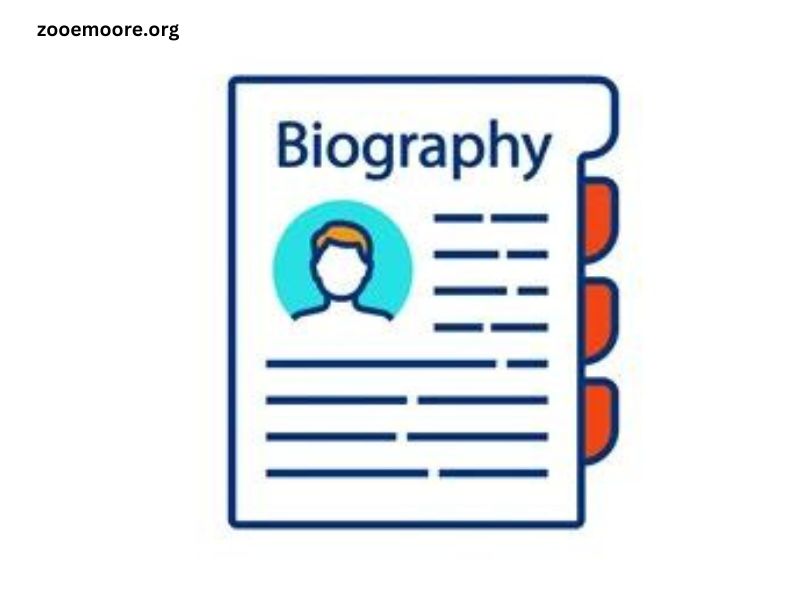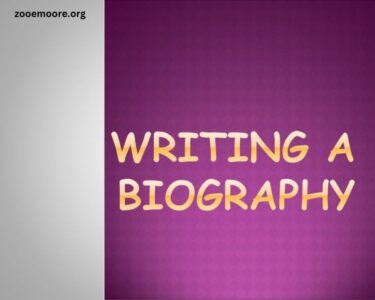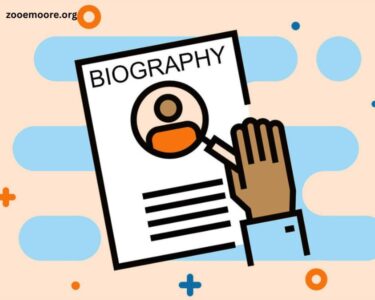A biography is more than just a narrative of someone’s life; it is an intricate account that delves into the essence of an individual’s existence, capturing their experiences, struggles, triumphs, and legacy. Whether it’s a historical figure, a contemporary celebrity, or a notable personality from any field, a biography offers a comprehensive exploration of their life story. This article will provide an in-depth look at what a biography entails, its various types, and its significance in literature and society.
What Is a Biography?
A biography is a detailed description or account of a person’s life, written by someone else. Unlike an autobiography, which is a self-written account, a biography is crafted by another individual who researches and presents the subject’s life story. It encompasses various elements such as the person’s background, achievements, personal life, and impact on their field or society.
Key Components of a Biography
- Early Life and Background: This section covers the subject’s upbringing, family background, education, and formative experiences. It provides context about the environment and influences that shaped their early years.
- Career and Achievements: Here, the biography delves into the subject’s professional life, including their career milestones, significant achievements, and contributions to their field. This part often highlights the individual’s impact and legacy.
- Personal Life: This component explores the subject’s relationships, family life, and personal interests. It provides a holistic view of the individual, beyond their public persona.
- Challenges and Struggles: A comprehensive biography addresses the obstacles and difficulties faced by the subject. It may include personal struggles, failures, and how they overcame these challenges.
- Legacy and Impact: This section examines the lasting influence of the subject on their field, society, or culture. It reflects on how their life and work continue to resonate beyond their lifetime.
- Conclusion: The biography often concludes with a reflection on the subject’s overall life and contributions, summarizing their significance and enduring impact.
Types of Biographies
Biographies can vary widely in scope and approach. Here are some common types:
- Traditional Biography: This is a comprehensive and chronological account of an individual’s life, often based on extensive research and interviews. It aims to provide an accurate and detailed portrayal of the subject.
- Autobiography: Although not a biography in the strictest sense, an autobiography is a self-written account of one’s own life. It offers a personal perspective on the author’s experiences and achievements.
- Memoir: A memoir is a subset of autobiography that focuses on specific events or periods in the author’s life. Unlike a full autobiography, a memoir provides a more selective and thematic exploration of experiences.
- Biographical Novel: This genre combines factual biography with fictional elements. It aims to bring historical figures to life through imaginative storytelling while maintaining historical accuracy.
- Critical Biography: This type of biography includes an analysis of the subject’s life and work, often interpreting their achievements and influence in a broader cultural or historical context.
- Short Biography: Often found in reference works or introductory materials, short biographies provide a concise overview of an individual’s life, focusing on key facts and achievements.
The Significance of Biography
Biographies serve several important purposes, both for individuals and society as a whole. Here’s why they matter:
- Historical Understanding: Biographies offer insights into historical figures and events, helping readers understand the context and significance of different periods. They provide a personal perspective on historical developments, enriching our understanding of the past.
- Inspiration and Motivation: Learning about the lives of accomplished individuals can be highly motivating. Biographies often highlight how people overcame obstacles, achieved greatness, and made a difference, inspiring readers to pursue their own goals and aspirations.
- Cultural and Social Insight: Biographies provide a window into the cultural and social contexts in which individuals lived. They reveal how societal norms, values, and challenges influenced their lives and work.
- Educational Value: Biographies are valuable educational tools. They can be used to teach about historical events, social issues, and personal development. They also help develop critical thinking and analytical skills as readers assess the subject’s life and impact.
- Preservation of Legacy: By documenting the lives of notable individuals, biographies help preserve their legacy for future generations. They ensure that the achievements and contributions of significant figures are remembered and celebrated.
- Personal Connection: Biographies often create a sense of personal connection between the reader and the subject. By exploring the details of someone’s life, readers may find common ground or gain a deeper appreciation for the individual’s experiences.
Writing a Biography
Writing a biography involves a careful and methodical approach to ensure accuracy and depth. Here are some key steps in the process:
- Research: Thorough research is essential for a well-rounded biography. This includes gathering information from various sources such as interviews, letters, diaries, and historical records. Fact-checking and cross-referencing are crucial to ensure accuracy.
- Interviews: Conducting interviews with people who knew the subject or have expertise on their life can provide valuable insights and personal anecdotes. These interviews add authenticity and depth to the narrative.
- Organization: Structuring the biography in a coherent and engaging manner is important. This involves organizing the content chronologically or thematically, depending on the approach taken.
- Writing Style: The writing style should be engaging and accessible, reflecting the tone and personality of the subject. Balancing factual accuracy with compelling storytelling is key to creating a captivating biography.
- Revision and Editing: Revising and editing are critical to ensure clarity, coherence, and accuracy. This process involves refining the narrative, correcting errors, and enhancing the overall readability of the biography.
Conclusion
A biography is more than just a recounting of someone’s life; it is a nuanced and multi-dimensional exploration of their existence, impact, and legacy. Through detailed research and engaging storytelling, biographies offer valuable insights into the lives of individuals who have shaped history, culture, and society. They inspire, educate, and preserve the legacies of remarkable figures, ensuring that their contributions continue to resonate with future generations.



